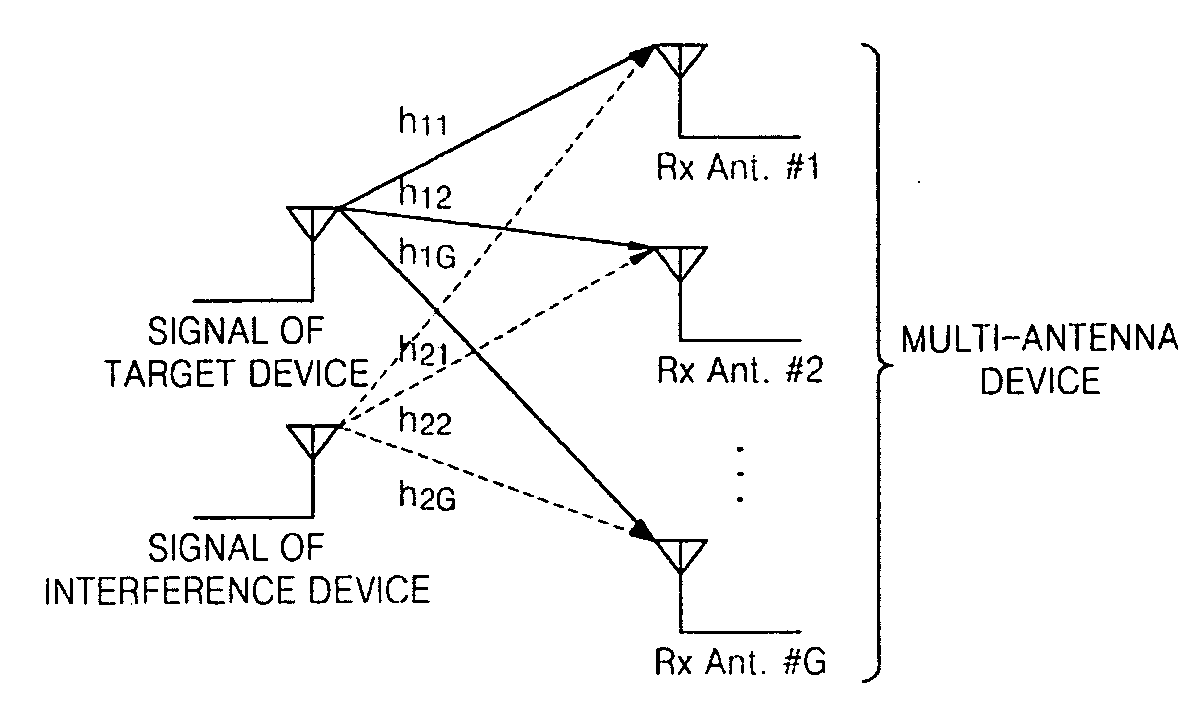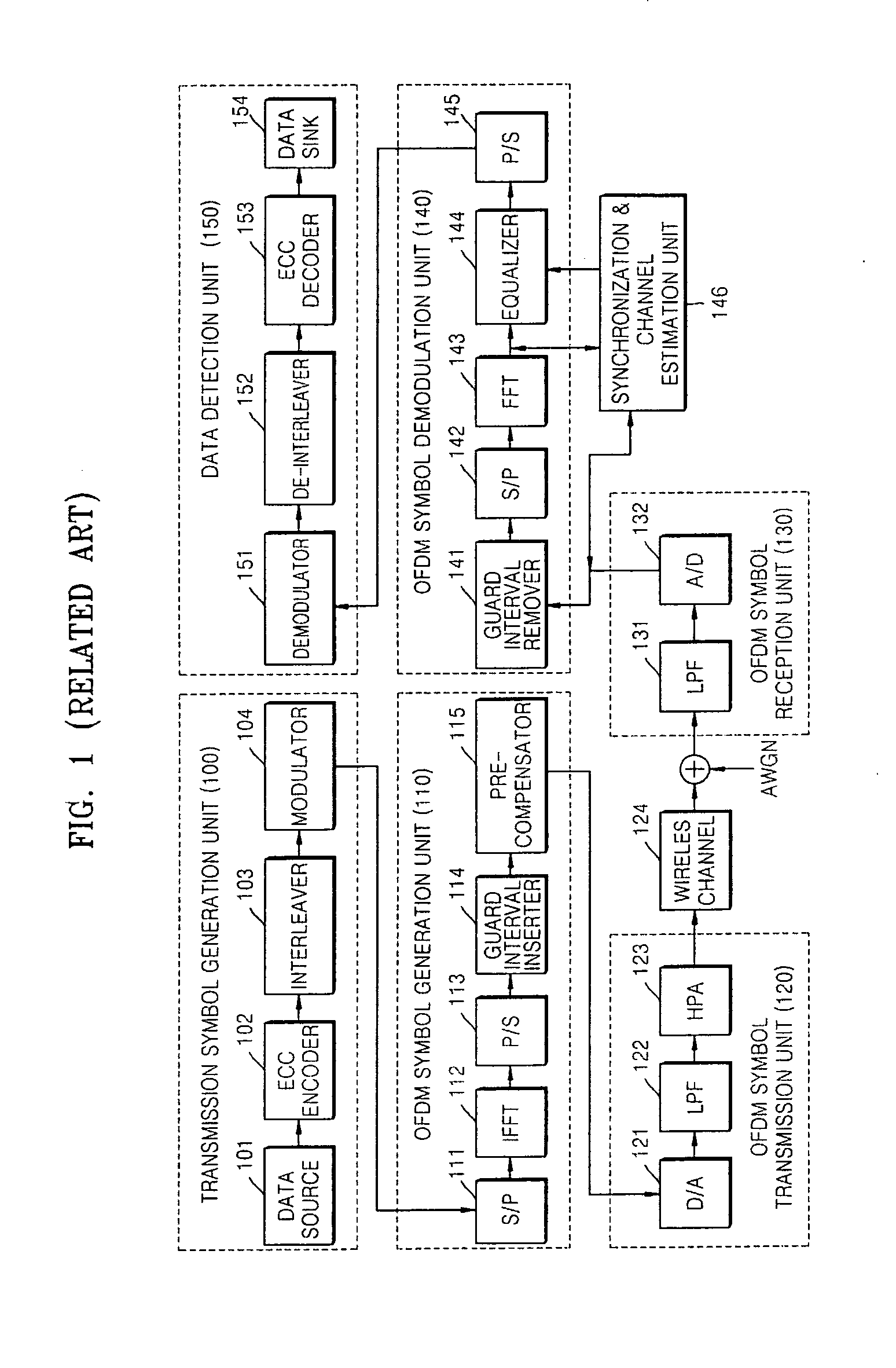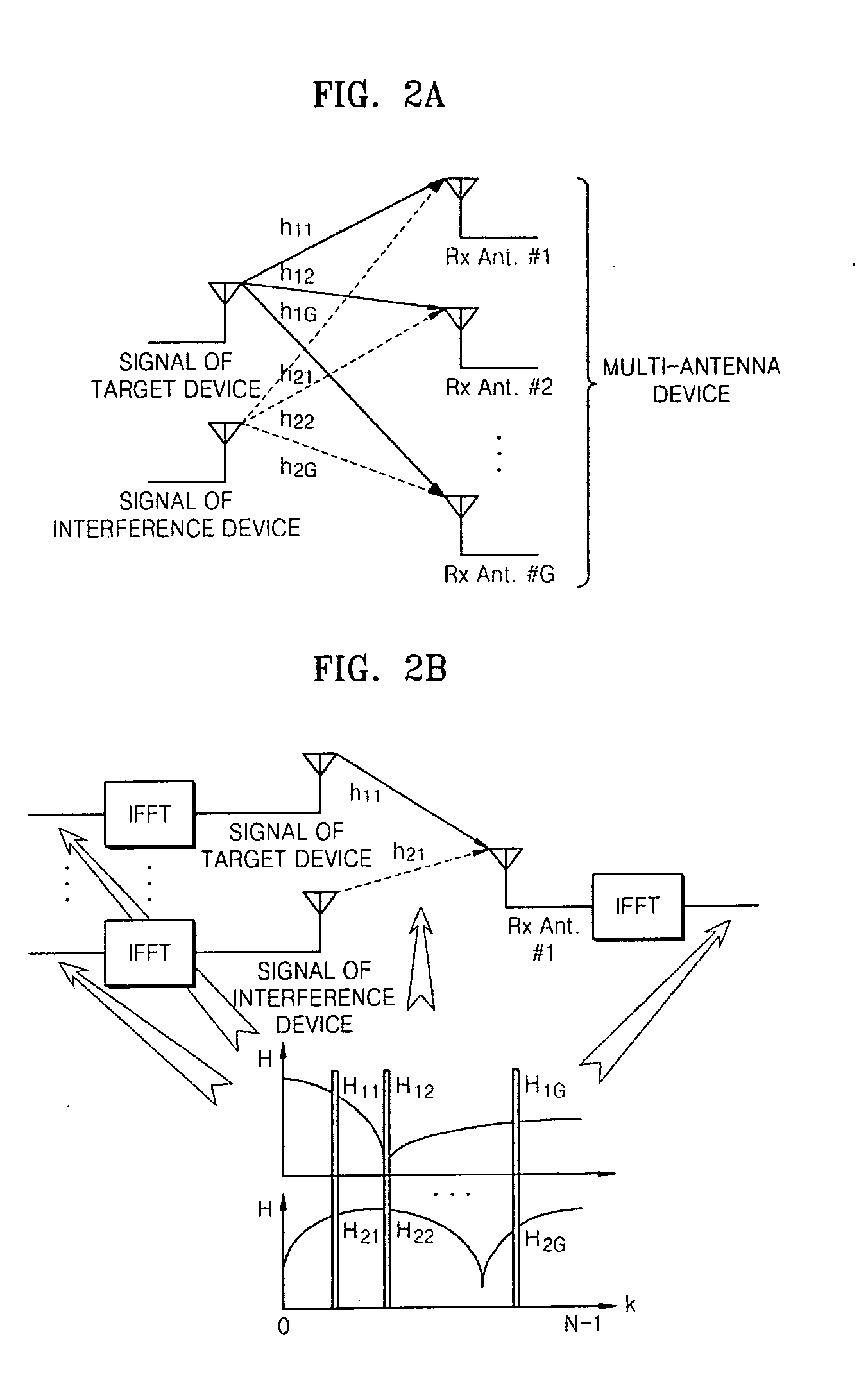Virtual multi-antenna method for OFDM system and OFDM-based cellular system
a multi-antenna and virtual technology, applied in the field of orthogonal frequency division multiplexing system and ofdm-based cellular system, can solve the problems of hardware complexity aggravating and orthogonality being disrupted according to the direction
- Summary
- Abstract
- Description
- Claims
- Application Information
AI Technical Summary
Benefits of technology
Problems solved by technology
Method used
Image
Examples
Embodiment Construction
[0051]The present invention will now be described more fully with reference to the accompanying drawings, in which exemplary embodiments of the invention are shown.
[0052]The present invention will now be described more fully with reference to the accompanying drawings, in which exemplary embodiments of the invention are shown. The invention may, however, be embodied in many different forms and should not be construed as being limited to the embodiments set forth therein; rather, these embodiments are provided so that this disclosure will be thorough and complete, and will fully convey the concept of the invention to those skilled in the art.
[0053]FIG. 1 is a block diagram of a general orthogonal frequency division multiplexing (OFDM) system. Referring to FIG. 1, a transmitting end of the OFDM system includes a transmission symbol generation unit 100, an OFDM symbol generation unit 110, and an OFDM symbol transmission unit 120. In addition, a receiving end of the OFDM system includes...
PUM
 Login to View More
Login to View More Abstract
Description
Claims
Application Information
 Login to View More
Login to View More - R&D
- Intellectual Property
- Life Sciences
- Materials
- Tech Scout
- Unparalleled Data Quality
- Higher Quality Content
- 60% Fewer Hallucinations
Browse by: Latest US Patents, China's latest patents, Technical Efficacy Thesaurus, Application Domain, Technology Topic, Popular Technical Reports.
© 2025 PatSnap. All rights reserved.Legal|Privacy policy|Modern Slavery Act Transparency Statement|Sitemap|About US| Contact US: help@patsnap.com



